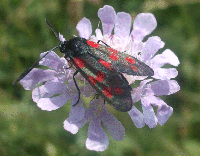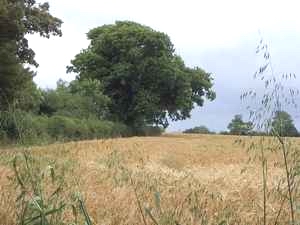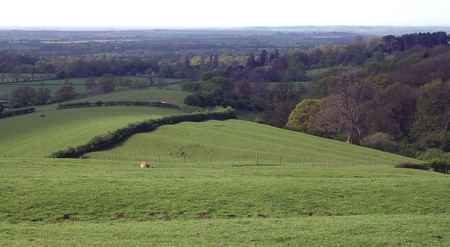When to Watch Wildlife | J | F | M | A | M | J | J | A | S | O | N | D | Search |
Current wildlife highlights | ||
| What's new on this site | ||
| Wildlife calendar | ||
|
Plants and Animals | ||
| Habitats | ||
| Wildlife sites | ||
| WWW links | ||
|
Guide Books | ||
| ||
© PMcS 2006 |
Arable and hedgerows | ||||||||||||
| ||||||||||||
| Arable Virtually the whole of the British countryside is, or has been, managed in one way or another which means that there are no truly natural habitats left. Some areas have been under the influence of man for many thousands of years. However the management of the land for farming has left a mosaic of 'semi-natural' habitats, where plant and animal species, both natives and introductions, can find a home. Semi-natural habitats are those where the management alters the natural succession to woodland, but does not alter the nature of the habitat. Unfortunately modern arable farming tends to be less sympathetic to wildlife. However before 1950s agriculture was not so intensive as no artificial fertilisers, pesticides (which kills insects and fungus) or herbicides (which kills 'weeds') were used. This allowed plants, insects and birds etc. to thrive. Very few areas in Britain have retained this style of extensive farming and many of these are fragmented pockets which often attain a conservation designation, such as Sites of Special Scientific Interest. Such farming is most widespread in upland landscapes where the environment is harsh and there is little arable farming. Each habitat has a characteristic form of management. Arable farming is one where there is a high level of disturbance to the ground as fields are ploughed, prepared and sown with cereals then harvested. Modern farming does not even leave the ground fallow or alternate crops. The plants that can be found in such conditions are those which can grow from seed, flower and set seed again in one season. These are called annuals. Often plants of interest are confined to the edges of fields where the the crop has not been sown and where chemical application is reduced. Hedgerows When the land was originally cleared of the extensive wild wood farming plots were relatively small and separated by woodland. Clearing increased and all that was left of many wood was a thin strip used as a boundary from the neighbours. The Anglo-Saxon ancient field system that developed was complex and intricate with fields of upto an acre. Hedgerows delineated land parcels, but also play and important role in corralling livestock. Some areas with such systems can be found e.g. The Lizard peninsula.
A sizable proportion of the arable\crop farming of Medieval times was however carried out in a much more open landscape than we are now accustomed to. This was because there was a different way of allocating use of cultivatable land for crop production. Only with the advent of the enclosure Acts between 1720 and 1840 was there a land grab by the rich land owners. They could claim land by establishing partitions using walls or hedges, thus dispossessing many. About 200,000 miles of hedges were planted with hawthorn being a common constituent.
Hedges provide a fantastic habitat for insects, small mammals, birds and plants. Larger animals use them for shelter or to provide a source of food. The older the hedge the more tree and shrub species can be found growing in it. Those which are really old will support woodland ground flora and are likely to be on banks with ditches and not straight. Hedges commonly are made up of hawthorn with any number of other species, such as blackthorn, field maple, spindle, willow (where it is wet), hazel, dogwood and bramble. English elms no longer grow as large trees but can be found, along with other trees such as oak, sycamore, elder, ash and beech for instance.
| ||||||||||||
|
All images and text are copyright PMcS 2006



